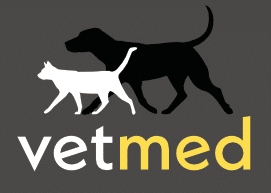Managing Your Pet’s Health in the Face of Rising Living Costs

At Vetmed, we understand that your pets are cherished members of your family, and their health is paramount. As living costs rise, balancing quality pet care with budget considerations can be challenging. From routine check-ups to unexpected health issues, the financial burden on pet owners can be overwhelming. However, there are practical ways to manage these costs while ensuring your furry friends remain healthy and happy. Let’s explore how preventative healthcare and pet insurance can be your allies in maintaining your pet’s well-being without straining your finances.
The Power of Preventative Health Care
Preventative health care is the cornerstone of responsible pet ownership. By staying ahead of potential health issues, you can avoid costly treatments down the line. Here’s how to incorporate preventative care into your pet’s routine:
1. Regular Check-Ups: Annual or bi-annual vet visits are crucial for early detection of health issues. These visits often include vaccinations, dental checks, and routine blood tests, helping to catch problems before they escalate.
2. Vaccinations: Keeping up with your pet’s vaccination schedule is one of the simplest ways to protect them from common diseases. Vaccinations can prevent illnesses that might otherwise require expensive treatments.
3. Dental Care: Dental disease is a common issue in pets that can lead to more serious health problems. Regular teeth brushing, dental treats, and professional cleanings can keep your pet’s mouth healthy and reduce the risk of infections and other complications.
4. Parasite Prevention: Fleas, ticks, and heartworms can cause severe health problems if left untreated. Regular use of preventative treatments can protect your pet from these parasites and the diseases they carry.
Understanding Pet Insurance: What’s Covered and What’s Not
Pet insurance can be a valuable tool in managing your pet’s health expenses, but it’s essential to understand what’s included and what’s excluded. In Australia, pet insurance typically covers a range of veterinary treatments and services for dogs and cats, but the specifics can vary widely depending on the policy and provider. Here are some common inclusions and exclusions you might find:
Typically Included in Pet Insurance:
1. Accidents and Injuries:
- Coverage for injuries resulting from accidents, such as fractures, lacerations, or ingestion of foreign objects.
2. Illnesses:
- Treatment for a range of illnesses, from infections and chronic conditions like diabetes and arthritis to certain cancers.
3. Emergency Care:
- Coverage for emergency visits, surgeries, and hospitalisation due to accidents or illnesses.
4. Diagnostic Tests:
- Costs for diagnostic tests, such as X-rays, blood tests, and ultrasounds, needed to diagnose health issues.
5. Surgery:
- Coverage for surgical procedures required to treat covered conditions or accidents.
6. Medications:
- Reimbursement for prescription medications needed to treat covered conditions.
7. Specialist Consultations:
- Coverage for consultations with veterinary specialists if required for treating covered conditions.
Typically Excluded from Pet Insurance:
1. Pre-existing Conditions:
- Conditions that existed before the start of the policy or during any waiting periods are generally not covered.
2. Routine and Preventative Care:
- Preventative treatments such as vaccinations, dental cleanings, flea and tick treatments, and regular check-ups are usually excluded.
3. Desexing:
- Desexing (spaying or neutering) is generally excluded from standard pet insurance policies as it is considered a routine and preventative procedure rather than an unexpected health issue.
4. Cosmetic Procedures:
- Procedures considered cosmetic or non-essential, such as ear cropping or tail docking, are not covered.
5. Breeding and Pregnancy:
- Costs associated with breeding, pregnancy, and birthing are typically excluded.
6. Behavioural Issues:
- Treatment for behavioural problems or training sessions is not covered.
7. Existing Health Issues:
- Conditions that were present before the insurance policy started, even if not previously diagnosed, are excluded.
8. Elective Procedures:
- Non-emergency procedures that are not deemed medically necessary are usually excluded.
Additional Notes:
- Waiting Periods: Most policies have waiting periods before coverage begins, which can vary for accidents and illnesses.
- Coverage Limits: Policies often have annual or per-incident limits, so it’s important to check these limits when selecting a policy.
- Excesses: Most pet insurance policies require an excess payment, which is the amount you pay out-of-pocket before the insurer covers the rest of the claim.
It’s important to carefully read the policy documents and understand the specific terms, conditions, waiting periods, and annual limits associated with any pet insurance plan you’re considering. Comparing different providers and policies can help you find the best coverage that suits your pet’s needs and your budget.
Planning for Your Pet’s Health with Vetmed
While managing pet health expenses can be challenging, a proactive approach to pet care can help you navigate costs effectively. By embracing preventative care and considering whether pet insurance is right for you, you can ensure that your furry friend enjoys a long, healthy, and happy life. Remember, a little planning and awareness go a long way in keeping your pet’s tail wagging and your wallet intact.
Vetmed: we are here for you and your pet
For more information and personalised advice contact Vetmed. We’re here to help you make the best decisions for your pet’s health and well-being.
Vetmed offers comprehensive pet care services, with four clinic locations across the Eastern Suburbs and the Northern Beaches, including Lindfield, Randwick, Forestville, and Northbridge.
